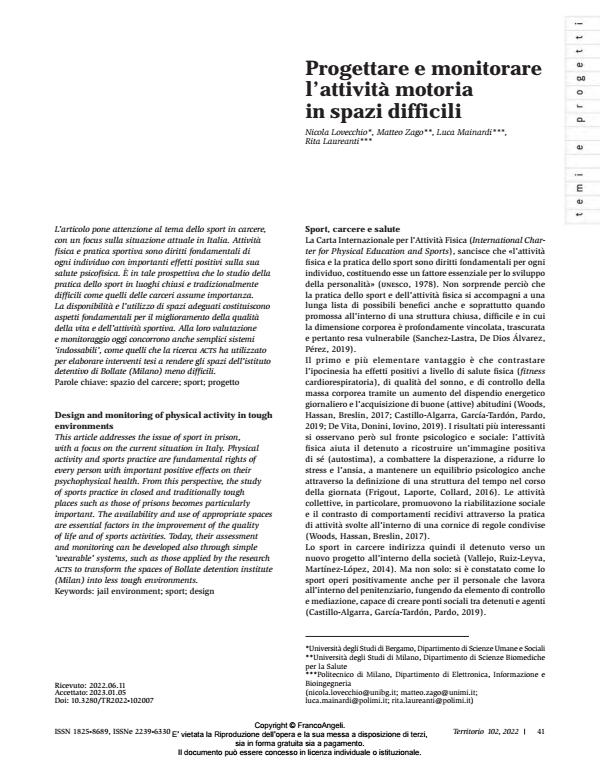Design and monitoring of physical activity in tough environments
Journal title TERRITORIO
Author/s Nicola Lovecchio, Matteo Zago, Luca Mainardi, Rita Laureanti
Publishing Year 2023 Issue 2022/102
Language Italian Pages 5 P. 41-45 File size 147 KB
DOI 10.3280/TR2022-102007
DOI is like a bar code for intellectual property: to have more infomation
click here
Below, you can see the article first page
If you want to buy this article in PDF format, you can do it, following the instructions to buy download credits

FrancoAngeli is member of Publishers International Linking Association, Inc (PILA), a not-for-profit association which run the CrossRef service enabling links to and from online scholarly content.
This article addresses the issue of sport in prison, with a focus on the current situation in Italy. Physical activity and sports practice are fundamental rights of every person with important positive effects on their psychophysical health. From this perspective, the study of sports practice in closed and traditionally tough places such as those of prisons becomes particularly important. The availability and use of appropriate spaces are essential factors in the improvement of the quality of life and of sports activities. Today, their assessment and monitoring can be developed also through simple ‘wearable’ systems, such as those applied by the research ACTS to transform the spaces of Bollate detention institute (Milan) into less tough environments.
Keywords: jail environment; sport; design
Nicola Lovecchio, Matteo Zago, Luca Mainardi, Rita Laureanti, Progettare e monitorare l’attività motoria in spazi difficili in "TERRITORIO" 102/2022, pp 41-45, DOI: 10.3280/TR2022-102007